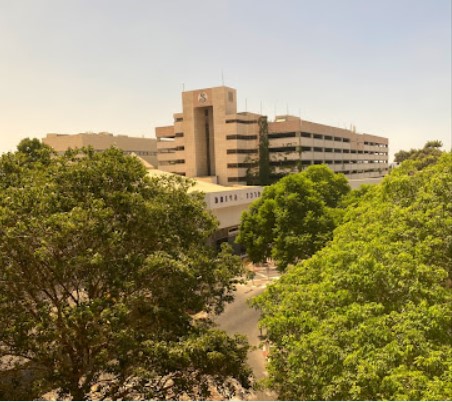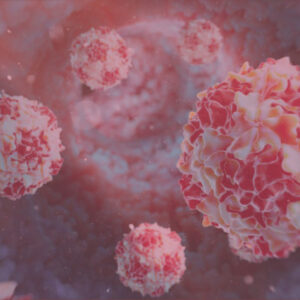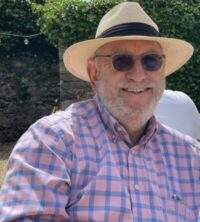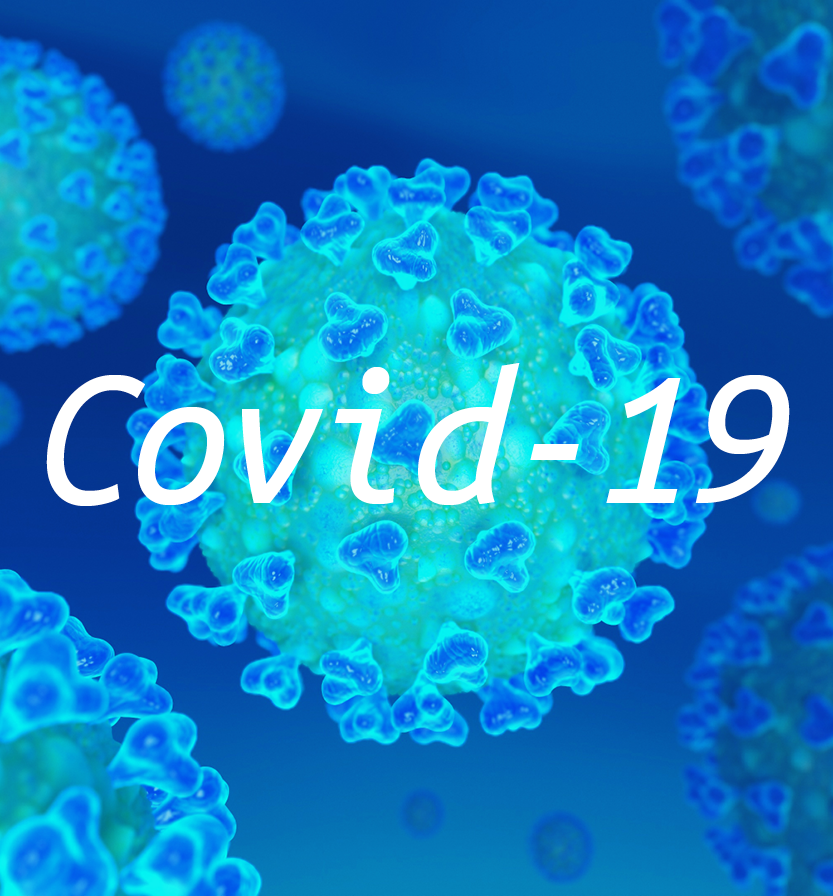I undertook my elective at the Microgravity Centre in Porto Alegre, Brazil. This facility was part of the Pontifícia Universidade Católica do Rio Grande do Sul.
During my time in Brazil I was involved in two projects, both in the field of space medicine. I have always been interested in extreme environments, and especially space travel. I saw my elective as an excellent opportunity to gain experience in the field of space medicine and conduct original research in this area.
The Microgravity Centre specialises in simulating microgravity and hypogravity to investigate the effects of these environments on the body and on medical procedures. This is achieved by means of body weight suspension and lower body positive pressure (LBPP). The primary focus of my own project was to use a LBPP and treadmill system that had been set up to simulate walking on Mars. Once this was accurately achieved, open circuit spirometry was used to measure respiratory gases. This data was then used to investigate the metabolic changes that occur when walking in simulated Martian gravity. Details of the project were summarised in the abstract below:
The metabolic cost of walking in simulated Martian gravity and its implications
Elliot Brown, Thais Russomano, Brenda Bueno, Leonardo Bandeira, Leandro Disiuta, Ingrid Lamadrid, Michele da Rosa, Julio C M de Lima, Rafael R Baptista, Raquel da Luz Dias
INTRODUCTION: Understanding the metabolic cost of walking is vital to the success of future missions to Mars. Lower body positive pressure (LBPP) is an effective way of simulating hypogravity. A small number of studies have shown that oxygen consumption (VO2) decreases when walking in LBPP simulated Martian gravity. This study measured the submaximal VO2 and other respiratory gases when walking on a LBPP treadmill at 1G and simulated Martian gravity (0.38G). Specific focus was given to analysing calorific expenditure and substrates metabolised.
METHODS: Twelve healthy participants with mean age (± SD) 22.75±5.38 years took part in this study with full consent. The LBPP box used was designed and built by the Microgravity Centre. A VO2000 gas analyser measured respiratory gases and a Polar S610 heart rate monitor measured heart rate. Volunteers walked for 8 min at a control of 1G and then for another 8 min in simulated 0.38G two weeks later. Student’s t test for paired samples determined if the data from the two environments were significantly different.
RESULTS: Mean (± SD) VO2 was 1.00±0.61 ml/kg/min in 1G compared to 0.68±0.33 ml/kg/min in simulated 0.38G (p<0.05). Average Calorific expenditure was significantly reduced (4.79±2.80 Kcal/min) when compared to the control (3.37±1.49 Kcal/min) (p<0.05). The average heart rate at the control weight was 118.49±15.07 bpm, significantly reduced to 106.20±11.17 bpm when body weight was unloaded (p<0.05). Average respiratory quotient (RQ) was significantly increased (p<0.05) from 0.83±0.13 to 1.14±0.19 in simulated 0.38G, with no significant difference seen in the fraction of expired carbon dioxide.
DISCUSSION: Energy consumption significantly decreased when walking in LBPP simulated hypogravity. This agrees with previous studies which also measured a reduction in VO2. Reduced calorific expenditure was also measured during the Apollo 15 Lunar landing. Observed calorimetry and respiratory gas findings can be used to calibrate EVA suits and advise on diet and exercise regimes for future astronauts. RQ indicates that a higher proportion of carbohydrates were used as an energy substrate. On Earth, LBPP can be used to remobilise patients effectively whilst reducing joint loading. Rehabilitation regimes can now be tailored with an understanding of how metabolism changes.
During this elective I was also able to participate in two other projects.
One of these focused on testing a novel method of delivering cardiopulmonary resuscitation (CPR) for use on the Moon and Mars. Hypogravity was simulated by using a body weight suspension system. This project was mainly led by another medical student from Glasgow Medical School.
The other was a telemedicine outreach clinic to the village of Palmares do Sul. I helped to run a cardiology and dermatology clinic with the aid of 2nd year Brazilian medical students. Clinical information such as ECGs and dermatological photographs were gathered by our teams and sent back to consultants in Porto Alegre. Through this system, patients who live far from specialist care could be reviewed. Acutely ill patients were treated by the outreach team on site.
In addition, I also scrubbed into surgical theatre at the São Lucas Hospital in Porto Alegre and attended lectures on hypoxia and space suit physiology.
Following the elective I was fortunate that my research abstract was accepted for presentation at the Aerospace Medicine Association (AsMA) annual scientific meeting in Denver, USA. The Jewish Medical Association (UK) made my attendance at the five-day conference possible. This gave me a unique opportunity to present my work internationally, and to network with professionals in the medical specialty I would like to pursue.
AsMA was founded in 1929, and is the largest international meeting of aerospace medical professionals. Over 50 nations were represented, and approximately two thirds of the delegates had a military background in the air force or navy. The medical staff from major space agencies such as NASA and ESA were also present. Several NASA astronauts were also in attendance at the conference.
My abstract was selected for a 15 minute slide presentation in the session ‘Future of Space Medicine Part 1’. Following my presentation I discussed my project with experts in the field and explore ideas for future work. The medical student from Glasgow also presented her work on CPR.
This experience provided me with an unparalleled opportunity to gain career advice from a multitude of flight surgeons working in both the military and in space agencies. Everyone was extremely welcoming to us, having come all the way from the U.K. In particular, it was wonderful to meet and talk to Dr J D Polk, Chief Medical Officer for NASA, and fascinating to gain insights into his job in Washington and his opinion about the future of manned space flight. Dr. Chuck Berry, the flight surgeon for the ill-fated mission of Apollo 13 was also present. In his lecture, he discussed the medical challenges that were faced during the crisis. From the U.K. it was a pleasure to meet Dr. Kevin Fong from the UK, who delivered the Royal Society Christmas lectures on space medicine in 2016.
Whilst I was in Denver I made the most of engaging with the local Jewish community. I spent the first Shabbat spent with the one of the local Chabad families and was invited to their son’s barmitzvah! I spent the second Shabbat with the Hillel House at the University of Colorado in Denver. I got to know many Jewish students studying there university and I am still in contact with them today.
Elliot Brown
Birmingham




